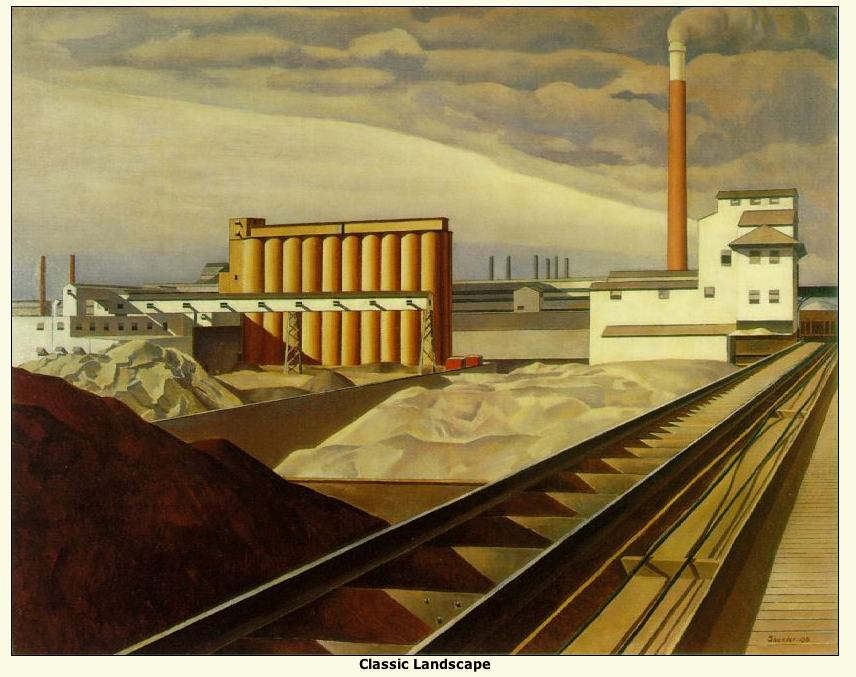Speaking of Matisse, it’s worth noting that while he was nothing if not original, he didn’t disdain those old-time pictorial devices. In “Luxe, Calme, et Volupte” his composition is based on the foreground oblique (a diagonal receding into space), and effective use of haloing.
Haloing involves pushing the contrast between an object (e.g., a figure) and its immediate background. Simply setting a light figure, for example, against a dark background, as in the Tintoretto below, works if the composition is variable enough to provide contrast where it’s needed, but in “Luxe” Matisse is going for all-over brightness, and needs to be more direct.
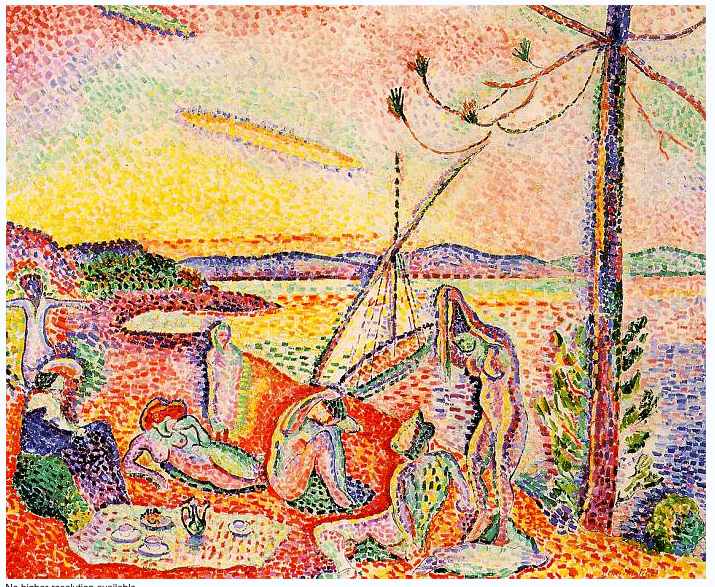
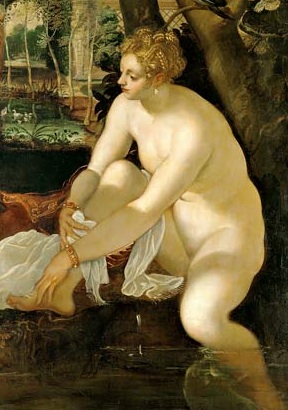
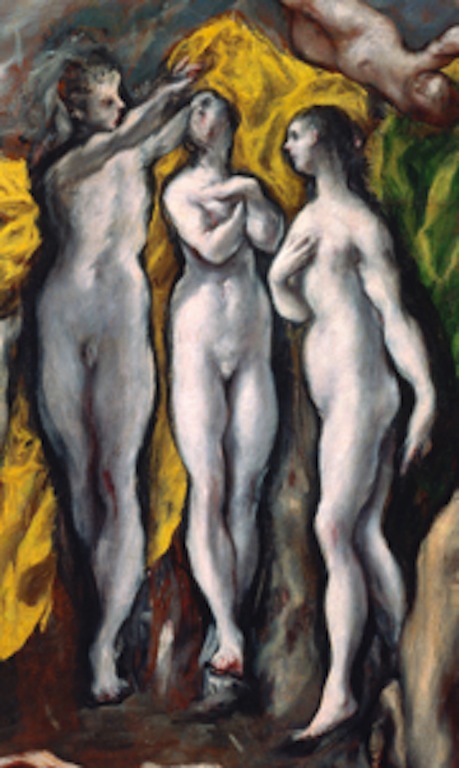
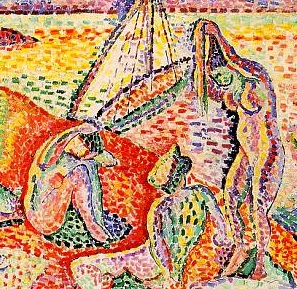
When contrast doesn’t work, or is just too fussy, a fallback device is haloing–just surrounding a shape with a strong contrast. El Greco employs it very forthrightly in the detail to the left. The blacks around the figures are more than outlines, but they don’t describe forms, as Tintoretto’s do. They describe psychological space, if you will–they focus us on the figures so strongly that the background simply doesn’t count. Matisse goes at it in the same way, although even more abstractly, with red surrounding the recumbent figures, and blue along the belly of the standing woman. The red reads as a concentration of colors in the ground; the blue has no logic except compositional convenience, but there it scores both in its boldness in describing the figure and in rhyming blues elsewhere.
The oblique foreground, stabilized by contrary foreground diagonals and distant horizontals (three examples below), is an old device, used so much because it creates such interesting space. Matisse’s use of these traditional devices takes nothing from the modernity of his achievements. He uses what works, and builds on it. As T.S. Eliot (or was it Picasso?–somebody confident) said, “Good artists borrow, great artists steal.”
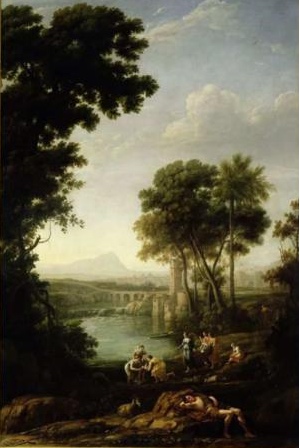
![Seurat: "Gray Weather, Grande Jatte" 1888 [W'ped]](http://www.stanwashburn.com/wp-content/uploads/2013/03/Seurat-Gray-weather-Grande-Jatte.-1888-28x34-Wped.jpg)
